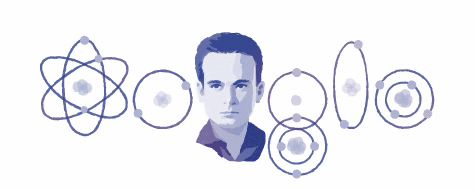
The Google Doodle released today (July 11) is a tribute to César Lattes, a pioneering Brazilian physicist who would have celebrated his 100th birthday today.
Born to Italian immigrants in 1924 in Curitiba, Brazil, Lattes is widely credited with the discovery of the subatomic particle known as the pion, or pi meson — which is produced in the shockwaves from star explosions and rains down on Earth in the form of cosmic rays.
"Happy birthday César Lattes, thank you for paving the way for experimental physics in Latin America and around the world!" Google representatives wrote in a blog post honoring Lattes.
Lattes’ induction to advanced experimental physics began in 1934 at the recently founded University of São Paulo, where he was the only student enrolled in a course run by the then-famous Italian experimental physicist Giuseppe Occhialini. Occhialini taught Lattes to develop photographic film exposed to radiation.
In 1944 Occhialini went to the University of Bristol to work with the English physicist Cecil Frank Powell on the development of nuclear emulsion plates that could detect traces of highly energetic particles. Consisting of photosensitive silver salt suspended inside gelatin, the plates, upon development, clearly showed the tracks of charged particles that had passed through them.
After obtaining one of the plates sent by Occhialini, Lattes realized that it was missing a key ingredient: boron.
"Lattes correctly suspected that adding boron to photographic plates would give him a clearer image of particles breaking down," according to the Google blog post. "It worked so well, he could see each proton."
In April 1947, at 23 years old, Lattes climbed 17,060 feet (5,200 meters) to a weather station atop Bolivia’s Mount Chacaltaya with two of his photographic plates. There, clear as day inside the tracks preserved in the plates, Lattes discovered a particle that had been predicted but never seen — the pion.
Consisting of a quark and an antiquark glued together by the strong nuclear force, the pion (or pi meson) can come in three distinct types. The discovery earned Powell — but neither Lattes nor Occhialini — the 1950 Nobel Prize.
In fact, Lattes was nominated seven times for the Nobel Prize — despite never having earned a doctorate — but never won.
Lattes later returned to Brazil to teach, and died in 2005 from a heart attack in the suburbs near his São Paulo campus. Despite his rockstar status across Brazil and Latin America, Lattes was characteristically nonchalant about his fame.
"I was dragged along by history, and I did my best," Lattes told the Brazilian science and culture magazine Superinteressante in 1997. "If I had to choose, today I would be a veterinarian."







